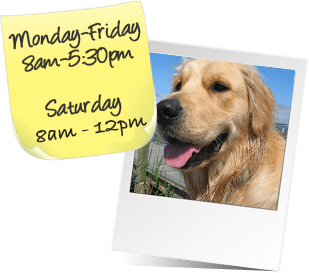Is your dog an energetic, bouncing ball of fur? Have you got a four-legged couch potato on your hands? No matter which category your dog falls into, he will require frequent exercise to keep happy and healthy. Of course, dog workouts vary tremendously. A neighborhood Jupiter Island, FL veterinarian offers some advice on the subject below.
How Do I Know If My Dog Is Getting Enough Exercise?
Fido’s weight and bodily condition are two good indicators of this. If you’re unsure whether your pet is overweight, underweight, or just right, consult your veterinarian. Our Vet Nutrition and Weight Management services can help you develop a tailored exercise and diet plan to keep your dog in optimal shape.
There are several behavioral cues to watch for as well. Dogs who do not get adequate exercise are more likely to engage in undesired activities such as digging and chewing. They may also be more rowdy. If your dog is acting up, he may not be getting enough exercise or stimulation.
What Are Some Low-Energy Dogs?
All of our canine companions benefit from regular exercise. However, some people need a little encouragement to continue being active, especially as they get older. Saint Bernards, Chow Chows, Basset Hounds, and Mastiffs, to name a few, are examples of dogs that might become sluggish. Many older dogs, of course, also don’t have a whole lot of zing.
What Kind Of Dogs Require The Most Exercise?
Your dog’s age, breed, and health all play a role here. Some of our four-legged friends are undoubtedly more energetic than others. If you’re thinking about adopting a dog, or if you’ve already got a puppy, doing some breed research can be quite helpful.
Here are some high-energy dogs:
- Border Collies
- Boxer
- German shepherd
- Golden Retriever
- Siberian Husky
How Do I Keep My Senior Dog Active?
Fido’s activity requirements will change a bit as he ages. He won’t have the strength or stamina he once had, and he’ll get tired and drained much more quickly. Senior dogs are also more vulnerable to harsh heat and cold, which can be an issue.
Walking and playing are appropriate activities for most senior dogs. Take care to avoid overexerting Fido. Keep a watchful eye on him and bring him in when he begins to fatigue.
How Do I Know What’s Safe for My Canine Buddy?
The answer to this question will alter as your pet gets older. Fido’s health may also come into play. Ask your vet for specific advice.
Some dogs should never be encouraged to exercise excessively. This definitely pertains to brachycephalic dogs like pugs and Boxers. Those pushed-in faces may be charming, but they come at a heavy cost to the pooch. These dogs have relatively tiny air passageways, making it easy for them to lose their breath. Their physiology also makes it more difficult for them to cool down if they become overheated, as panting isn’t particularly effective for them. If you have a brachy, don’t push Fido to run or play hard. Swimming is likewise prohibited, but your canine companion may enjoy wading or splashing in a sprinkler or doggy fountain.
Swimming is also dangerous for little and toy breed dogs. It is also not suitable for puppies with long, thin torsos, such as Corgis and Dachshunds. Corgis and Dachshunds, in particular, are unsuitable for jumping or high-impact exercises. It’s fine for many medium and semi-large dogs, but it also depends on the pooch. Some dogs, such as Labrador Retrievers, adore the water and adapt to it like fuzzy, barking ducks. Others simply don’t do well.
Another consideration that may limit Fido’s activity possibilities is the danger of hip dysplasia. This is very common in some breeds, such as German Shepherds and Golden Retrievers, although any puppy might be affected. If your dog has arthritis or is in danger of developing hip dysplasia, your veterinarian and breeder may advise against having him jump or stand on his hind legs.
What Are Some Activities I Can Do With My Dog?
The AKC registry includes more than 200 breeds. Each of them was created to serve a specific purpose. (Even toy breeds have a job: looking cute!) Fido’s breed may reveal a lot about what he enjoys the most. For instance, a Lab Retriever may love dock diving.
That being said, if you and your furry friend are adventurous and up for a challenge, here are a few dog activities you can try:
- Dog Dancing
- Skijoring
- Skatejoring (skateboarding with your dog pulling you)
- Dock diving
- Agility
- lure coursing
- Earthdog
- Flyball
- Treibball
- Canicourse (Running with Fido)
- Hiking
If you’re particularly interested in Dog Dancing, also known as Canine Freestyle, check out our article Spotlight on Canine Freestyle Dance for more information on this fun and creative activity. Ask your veterinarian for particular advice on what might be best for Fido.
How Do I Know If My Dog Is Getting Overtired?
No matter what activity you and your canine companion are up to, it’s critical not to overtire Fido. Man’s Best Friend is exceedingly loyal and will go to great lengths to please his humans. If you notice your pooch panting, lagging behind, stumbling, or running out of steam, immediately give him water and let him rest. Then, return home. If symptoms persist, contact your Jupiter Island, FL pet clinic right away.
How Do I Get My Dog to Be More Active?
Have you heard the saying, “You can lead a horse to water, but you can’t make him drink?” That is pretty much applicable here. Fido’s opinions and preferences are all taken into account. You’ll have a lot more success if you try something your dog appreciates. Consider Fetch, for example. Many dogs learn this spontaneously. Others will just give you a cute confused look if you toss a Frisbee for them.
You may need to experiment with several options to determine what your canine companion prefers.
Nonetheless, walking is the norm here. Even taking your dog for a few short walks each day might help him stay in shape.
How Can I Keep My Dog Active Inside?
Sooner or later, bringing Fido out for more than a quick bathroom break will become unappealing. Whether it’s cold, raining, or both, your dog may become restless indoors. You can keep your pet active indoors.
Here are some options:
- Treadmills: Do you own a treadmill? If so, you can find out if your pet enjoys it. However, safety comes first. Remove Fido’s collar or harness. Start him on the slowest setting and keep a close check on him. Stop as soon as your pet appears exhausted. Finally, never leave your dog alone. (Note: Some cats utilize treadmills. Check out the viral video of Fluffy sprinting to Maniac from the Flashdance soundtrack. (You will not be disappointed.)
- Stair runs: Ascend the stairs while holding Fido’s favorite toy. Call him to come to you. When he brings you the toy, hurl it down the steps. (Note: This will only work for dogs who fetch and are in good enough shape to run up and down stairs a few times.)
- Workout Buddy: If you exercise indoors, try including Fido into your regimen. Are you doing sit-ups? Grab a dog toy. Throw it away while you’re sitting up. You can also perform lunges and squats. Our canine companions aren’t very good yoga mates, but they certainly make exercise more enjoyable.
- Fetch: Fetch can be played indoors if you have enough room. Simply avoid areas containing breakable and/or harmful objects.
Do you have any queries concerning your dog’s activity requirements? Contact your Jupiter Island, FL pet hospital at any time!




